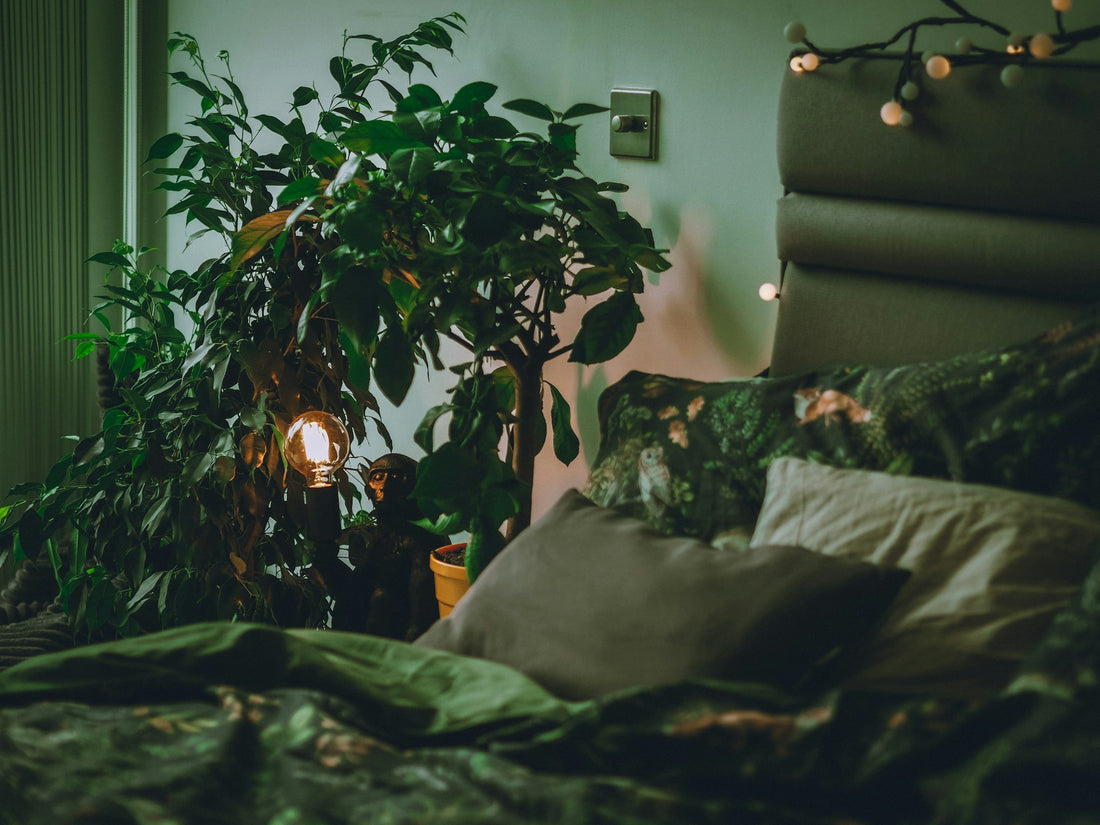
Embrace Nature Indoors: A Guide to Biophilic Design in Your Home
Share
In today's fast-paced, digital world, our connection to nature is more important than ever. Whether you live in a bustling city or a suburban neighborhood, the growing trend of biophilic design offers an inspired way to bring the natural world into your home. This design philosophy focuses on incorporating elements of nature into our interiors, creating calming, health-boosting environments that nurture well-being and enhance everyday living.
What is Biophilic Design?
At its core, biophilic design is the practice of integrating natural elements into our built environments. It’s based on the idea that humans have an innate connection to nature (known as "biophilia"), and incorporating aspects of the natural world into our homes helps us feel more relaxed, focused, and emotionally grounded.
Biophilic design goes beyond simply adding a few houseplants to a room—it aims to harmonize spaces with nature by considering light, materials, colors, and even airflow. The result is a home that feels more like a natural sanctuary, promoting well-being and improving both mental and physical health.
The Benefits of Biophilic Design
Research shows that spending time in nature reduces stress, improves mood, and boosts cognitive function. Biophilic design offers these same benefits within the comfort of your own home:
- Reduced Stress: Natural elements like wood, water, and plants help lower stress levels by creating a calming atmosphere.
- Improved Air Quality: Incorporating greenery into your interiors not only beautifies your space but also purifies the air by absorbing toxins and releasing oxygen.
- Boosted Creativity and Focus: Exposure to natural light and views of greenery have been shown to enhance concentration and creativity, making biophilic design perfect for home offices.
- Enhanced Well-being: Natural textures, earthy colors, and organic shapes help create a space that feels inviting and grounded, promoting a sense of well-being.
Key Elements of Biophilic Design
Ready to transform your space into a nature-inspired haven? Here are some key elements to focus on when creating biophilic interiors:
1. Natural Light
Maximizing natural light is essential in biophilic design. Large windows, skylights, and open floor plans help flood your home with sunlight, boosting mood and providing a visual connection to the outdoors. If you lack large windows, use mirrors strategically to reflect light and create a sense of spaciousness.
2. Indoor Greenery
Houseplants are an obvious but crucial element of biophilic design. From hanging plants in the kitchen to large potted trees in the living room, greenery brings life and freshness into any space. Consider low-maintenance plants like snake plants, ferns, or pothos for easy care and maximum impact.
3.Natural Materials
Incorporate materials that evoke nature, such as wood, stone, bamboo, and rattan. Wooden floors, stone countertops, and woven textures instantly connect your interiors to the natural world. Handcrafted furniture and décor made from organic materials also enhance this connection and add warmth to the space.
4. Earthy Color Palettes
Nature-inspired colors—think earthy tones like moss green, terracotta, soft browns, and sky blues—help create a serene environment. These hues mimic the landscapes we feel most at peace in and provide a soothing backdrop for any room.
5. Water Features
Water has a naturally calming effect, and incorporating it into your home can elevate your biophilic design. Consider adding a small indoor fountain, an aquarium, or even a natural stone basin with flowing water to introduce tranquility through sound and movement.
6. Organic Shapes and Patterns
Biophilic design embraces the imperfect, flowing shapes found in nature. Incorporate organic curves in your furniture, textiles, and décor to mimic the shapes of rivers, trees, and natural landscapes. Soft, rounded edges bring comfort and a sense of calm to the home.
7. Natural Ventilation and Airflow
Fresh air is a vital aspect of biophilic design. Allow for cross-ventilation by opening windows and using light, breathable fabrics for curtains. Consider incorporating a ceiling fan for natural air movement or designing your space to maximize airflow throughout the home.
Tips for Implementing Biophilic Design
- Start Small: You don’t have to overhaul your entire home at once. Begin by adding plants, updating your lighting, or incorporating natural textures and materials in a few key areas.
- Create a Green Oasis: Designate one space in your home as your "nature corner." Fill it with plants, a comfortable chair, and earthy décor to create a space where you can unwind and reconnect with nature.
- Layer with Textures: Natural textures bring tactile comfort and visual interest. Layer soft linens, wool throws, and woven baskets to enhance the cozy, organic feel of your space.
- Open Up to Nature**: If you have outdoor views, make the most of them by keeping windows unobstructed. Use sheer curtains or no window coverings at all to maintain a strong visual connection to the outdoors.
Biophilic design is more than just a trend—it’s a way of life that prioritizes our innate need to connect with nature. Whether you’re introducing greenery, enhancing natural light, or surrounding yourself with organic textures and materials, the beauty of biophilic design lies in its ability to make any space feel like a natural retreat. By embracing these principles, you can transform your home into a haven that not only looks beautiful but also supports your well-being and nurtures your connection to the world around you.
Start small, experiment with nature-inspired elements, and watch as your home evolves into a calming, nature-infused sanctuary.
